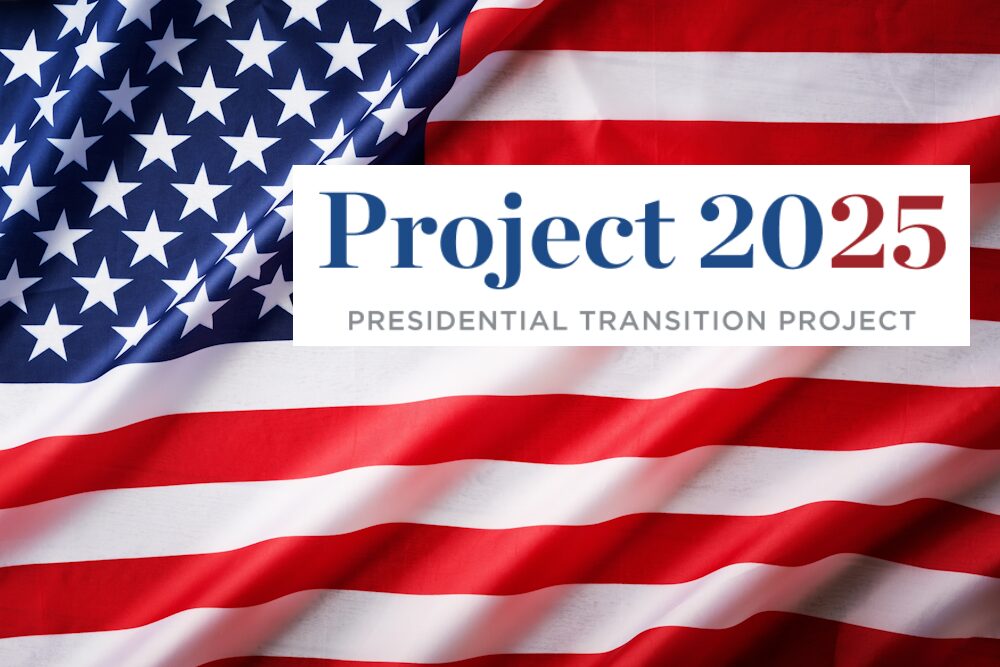This story was produced by The Hechinger Report, a nonprofit, nonpartisan news outlet focused on education.
The proposals in the 2025 Presidential Transition Project — known as Project 2025 and designed for Donald Trump — would reshape the American education system, early education through college, from start to finish.
The conservative Heritage Foundation is the primary force behind the sprawling blueprint, which is separate from the much less detailed Republican National Committee 2024 platform, though they share some common themes.
Kevin Roberts, the president of Heritage and its lobbying arm, Heritage Action, said in an interview with USA TODAY that Project 2025 should be seen “like a menu from the Cheesecake Factory.” No one president could take on all these changes, he said. “It’s a manual for conservative policy thought.”
From Head Start to student loans: Conservative proposals for a new Trump administration have wide reach
The fast-changing political landscape makes it difficult to say which of these proposals might be taken up by Trump if he wins reelection. He has claimed to know nothing about it, though many of his allies were involved in drafting it. The exit of President Joe Biden from the presidential race may have an impact on Project 2025 that is still unknown. Finally, many of the broadest proposals in the document, such as changes to Title I and the Individuals with Disabilities Education Act, would require congressional action, not just an order from the White House.
However, it remains a useful document for outlining the priorities of those who would likely play a part in a new Trump administration. The Hechinger Report created this reference guide that digs into the Project 2025 wish list for education.
Early education
Child care for military families
Project 2025 calls for expanding child care for military families, who have access to programs that are often upheld as premier examples of high-quality care in America. – Jackie Mader
Head Start and child care
Project 2025 calls for eliminating the Office of Head Start, which would lead to the closure of Head Start child care programs that serve about 833,000 low-income children each year. Most Head Start children are served in center-based programs, which have an outsized role in rural areas and prioritize enrolling a certain percentage of young children with disabilities who often struggle to find child care elsewhere. Head Start also provides a critical funding and resource stream to other private child care programs that meet Head Start standards, including home-based programs. – J. M.
Home-based child care
A conservative administration should also prioritize funding for home-based child care rather than “universal day care” in programs outside the home, Project 2025 says. That funding would include money for parents to stay home with a child or to pay for “familial, in-home” care, proposals that could be appealing to some early childhood advocates who have long called for more resources for informal care and stay-at-home parents. – J. M.
[Related: Parents tote toddlers to D.C. to press for expanded child tax credit, child care fund]
On-site child care
If out-of-home child care is necessary, Congress should offer incentives for on-site child care, Project 2025 says, because it “puts the least stress on the parent-child bond.” Early childhood advocates have been wary of such proposals because they tie child care access to a specific job. It also calls on Congress to clarify within the Fair Labor Standards Act that an employer’s expenses for providing such care are not part of the employee’s pay.– J. M.
K-12 education
Data collection
The National Assessment of Educational Progress, known as the “Nation’s Report Card,” should release student performance data based on “family structure” — in addition to existing categories such as race and socioeconomic status — Project 2025 argues. Family structure, the document says, is “one of the most important — if not the most important — factor influencing student educational achievement and attainment.” The document goes on to endorse “natural family structure” of a heterosexual, two-parent household, “because all children have a right to be raised by the men and women who conceived them.” — Sarah Butrymowicz
LGBTQ students
Project 2025 advocates a rollback of regulations that protect people from discrimination on the basis of sexual orientation and gender identity. It calls for agencies to “focus their enforcement of sex discrimination laws on the biological binary meaning of ‘sex.’”
The plan also calls on Congress and state lawmakers to require schools to refer to students by the names on their birth certificates and the pronouns associated with their biological sex, unless they have written permission from parents to refer to them otherwise.
The plan also equates transgender issues with child abuse and pornography, and proposes that school libraries with books deemed offensive be punished. — Ariel Gilreath
Privatization
In place of a federal Education Department, the blueprint calls for widespread public education funding that goes directly to families, as part of its overarching goal of “advancing education freedom.”
The document specifically highlights the education savings account program in Arizona, the first state to open school vouchers up to all families. Programs like Arizona’s have few, if any, restrictions on who can access the funding. Project 2025 also calls for education savings accounts for schools under federal jurisdiction, such as those run by the Department of Defense or the Bureau of Indian Education.
In addition, Project 2025 calls on Congress to look into creating a federal scholarship tax credit to “incentivize donors to contribute” to nonprofit groups that grant scholarships for private school tuition or education materials. — Ariel Gilreath and Neal Morton
School meals
The federal school meals program should be scaled back to ensure that only children from low-income families are receiving the benefit, the document says. Policy changes under the Obama administration have made it easier for entire schools or districts to provide free meals to students without families needing to submit individual eligibility paperwork. — Christina A. Samuels
Special education
Project 2025 says that the Individuals with Disabilities Education Act, which provides $14.2 billion in federal money for the education of school-aged children with disabilities, should be mostly converted to “no-strings” block grants to individual states. Lawmakers should also consider making a portion of the federal money payable directly to parents of children with disabilities, it says, so they can use it for tutoring, therapies or other educational materials. This would be similar to education savings accounts in place in Arizona and Florida.
The blueprint also calls for rescinding a policy called “Equity in IDEA.” Under that policy, districts are required to evaluate if schools are disproportionately enrolling Black, Native American and other ethnic minority students in special education. Districts must also track how these students are disciplined, and if they are more likely than other students in special education to be placed in classrooms separate from their general education peers. Current rules, which Project 2025 would eliminate, require that districts that have significant disparities in this area must use 15 percent of their federal funding to address those problems. — C.A.S.
Teaching about race
Project 2025 elevates concerns among members of the political right that educating students about race and racism risks promoting bias against white people. The document discusses the legal concept of critical race theory, and argues that when it is used in teacher training and school activities such as “mandatory affinity groups,” it disrupts “the values that hold communities together such as equality under the law and colorblindness.”
The document calls for legislation requiring schools to adopt proposals “that say no individual should receive punishment or benefits based on the color of their skin,” among other recommendations. It also calls for a federal Parents’ Bill of Rights that would give families a “fair hearing in court” if they believed the federal government had enforced policies undermining their right to raise their children. — Caroline Preston
Title I
This program, funded at a little over $18 billion for fiscal 2024, is the largest federal program for K-12 schools and is designed to help children from low-income families. The conservative blueprint would encourage lawmakers to make the program a block grant to states, with few restrictions on how it can be used — and, over 10 years, to phase it out entirely.
[Related: 2024 race for results: Building a pathway to opportunity for all children]
Additionally, it says, lawmakers should allow parents in Title I schools to use part of that funding for educational savings accounts that could be spent on private tutoring or other services. — C.A.S.
Higher education
Affirmative action and diversity, equity and inclusion
The document calls for prosecuting “all state and local governments, institutions of higher education, corporations, and any other private employers” that maintain affirmative action or DEI policies. That position matches the views expressed by Donald Trump and his running mate, Sen. J.D. Vance of Ohio, about the use of race in college admissions and beyond. — Liz Willen
Data collection
In higher education, the proposal argues that college graduation and earnings data need a “risk adjustment” that factors in the types of students served by a particular institution. While selective colleges tend to post the highest graduation rates and student earnings, they also tend to enroll the least-“risky” students. A risk adjustment methodology could benefit community colleges, which often have low graduation rates but enroll many nontraditional students who face obstacles to earning a degree. It would also likely benefit for-profit colleges, which similarly tend to accept most applicants. Historically, for-profit schools have received scrutiny under Democratic administrations for poor outcomes and for allegedly misleading students about the value of the education they provide. Republican administrations typically have supported less regulation of for-profit institutions. — S.B.
[Related: State laws threaten to erode academic freedom in US higher education]
Parent PLUS loans and Pell grants
The blueprint calls for the elimination of the Parent PLUS loan program, arguing that it is redundant “because there are many privately provided alternatives available.” Originally created for relatively affluent families, the PLUS loan program has become a crucial way for lower- and middle-income families to pay for college. In recent years, it has sparked criticism due to rising default rates and fewer protections than are afforded to other student loan borrowers.
At present, interest rates for private loans are significantly lower than Parent PLUS rates, but they come with fewer protections, and it is more difficult to get approved for a private-bank loan. Project 2025 would also get rid of PLUS loans for graduate students.
If the federal PLUS programs were eliminated, it could stem one portion of the rising tide of families’ education debt, but it would also make the path to paying for college more difficult for some families.
Project 2025 does not call for a change to the Pell grant program, which provides federal funding for students from low-income families to attend college. Some advocates have called for doubling the annual maximum allotment, which is $7,395 for the 2024-25 school year, far below the cost to attend many colleges. — Meredith Kolodner and Olivia Sanchez
Student loan forgiveness
Project 2025 would end the prospect of student loan forgiveness, which has already been largely blocked by federal courts; the Biden administration, in a sort of game of Whac-a-Mole, has proposed still more forgiveness programs that are being fought by Republican state attorneys general and others. Project 2025 would also dramatically restrict what’s known as “borrower defense to repayment,” which forgives loans borrowed to pay for colleges that closed or have been found to use illegal or deceptive marketing. Largely restricting the Education Department to collecting statistics, Project 2025 would shift responsibility for student loans to the Treasury Department. — Jon Marcus
***
This story about Project 2025 was produced by The Hechinger Report, a national, nonprofit, independent news organization focused on inequality and innovation in education. Sign up for our higher education newsletter.
































